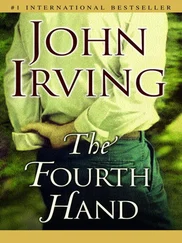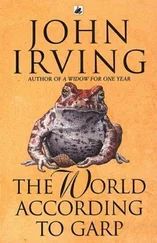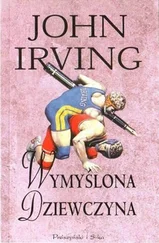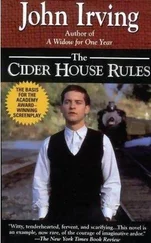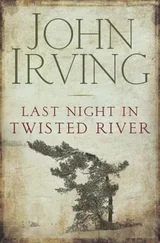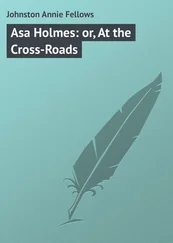Yes, of course —the former Rahul was none other than the second Mrs. Dogar, and each time Dr. Daruwalla felt the stab of pain in his ribs, where she’d collided with him in the foyer of the Duckworth Club, he mistakenly searched his forgetful mind for those now-faded film stars he saw over and over again on so many of his favorite videos. Farrokh would never find her there. Rahul wasn’t hiding in the old movies.
The Police Know the Movie Is Innocent
Just when Deputy Commissioner Patel had decided that he would never find Rahul, there was released in Bombay another predictably dreadful Inspector Dhar film. The real policeman had no desire to be further insulted; but when he learned what Inspector Dhar and the Cage-Girl Killer was about, the deputy commissioner not only went to see the film—he took Nancy to see it with him the second time. There could be no doubt regarding the source of that elephant drawing. Nancy was sure she knew where that jaunty little elephant had come from. No two minds could imagine a dead woman’s navel as a winking eye; even in the movie version, the elephant raised just one tusk—it was always the same tusk, too. And the water spraying from the elephant’s trunk—who would think of such a thing? Nancy had wondered, for 20 years. A child might think of such a thing, the deputy commissioner had told her.
The police had never given out such details to the press; the police preferred to keep their business to themselves—they’d not even informed the public about the existence of such an artistic serial killer. People often killed prostitutes. Why invite the press to sensationalize the presence of a single fiend? So, in truth, the police—most especially Detective Patel— knew that these murders had long predated the release of such a fantasy as Inspector Dhar and the Cage-Girl Killer . The movie merely drew the public’s attention to the real murders. The media assumed, wrongly, that the movie was to blame.
It had been Deputy Commissioner Patel’s idea to allow the misunderstanding to pass; the deputy commissioner wanted to see if the movie might inspire some jealousy on the part of Rahul, for the detective was of the opinion that, if his wife recognized the source of the inspiration of Inspector Dhar’s creator, so would the real murderer. The killing of Mr. Lal—especially the interesting two-rupee note in his mouth—indicated that the deputy commissioner had been right. Rahul must have seen the movie—assuming that Rahul wasn’t the screenwriter.
What puzzled the detective was that the note said MORE MEMBERS DIE IF DHAR REMAINS A MEMBER. Since Nancy had been smart enough to figure out that only a doctor would have been shown Beth’s decorated body, surely Rahul would know as well that it wasn’t Dhar himself who’d seen one of Rahul’s works of art; it could only be the doctor who was so frequently in Dhar’s company.
The matter that Detective Patel wished to speak of with Dr. Daruwalla in private was simply this. The detective wanted the doctor to confirm Nancy’s theories—that he was Dhar’s true creator and had seen the drawing on Beth’s belly. But the deputy commissioner also wanted to warn Dr. Daruwalla. MORE MEMBERS DIE… this could mean that the doctor might be Rahul’s future target. Detective Patel and Nancy believed that Farrokh was a more likely target than Dhar himself.
On the telephone, such complicated news took time for the policeman to deliver and for the doctor to comprehend. And since Nancy had passed the telephone to her husband, that element of the real murderer being a transvestite, or even a thoroughly convincing woman , wasn’t a part of Detective Patel’s conversation with Farrokh. Unfortunately, the name Rahul was never mentioned. It was simply agreed that Dr. Daruwalla would come to Crime Branch Headquarters, where the deputy commissioner would show him photographs of the elephants drawn on the murdered women—this for the sake of mere confirmation—and that both Dhar and the doctor should exercise extreme caution. The real murderer had seemingly been provoked by Inspector Dhar and the Cage-Girl Killer —if not exactly in the way that the public and many angry prostitutes believed.
A View of Two Marriages at a Vulnerable Hour
As soon as Dr. Daruwalla hung up the phone, he carried his agitation to the dinner table, where Roopa apologized for the utter deterioration of the mutton, which was her way of saying that this mushy meat in her beloved dhal was all the doctor’s fault, which of course it was. Dhar then asked the doctor if he’d read the new hate mail—Farrokh had not. A pity, John D. said, because it might well be the last of the mail from those infuriated prostitutes. Balraj Gupta, the director, had informed John D. that the new Inspector Dhar movie ( Inspector Dhar and the Towers of Silence ) was being released tomorrow. After that, John D. said ironically, the hate mail would most likely be from all the offended Parsis.
“Tomorrow!” cried Dr. Daruwalla.
“Well, actually, after midnight tonight,” Dhar said.
Dr. Daruwalla should have known. Whenever Balraj Gupta called him and asked to discuss with him something that the director wanted to do, it invariably meant that the director had already done it.
“But no more of this trivia!” Farrokh said to his wife and John D. The doctor took a deep breath; then he informed them of everything that Deputy Commissioner Patel had told him.
All Julia asked was, “How many murders has this killer managed—how many victims are there?”
“Sixty-nine,” said Dr. Daruwalla. Julia’s gasp was less surprising than John D.’s inappropriate calm.
“Does that count Mr. Lal?” Dhar asked.
“Mr. Lal makes seventy— if Mr. Lal is truly connected,” Farrokh replied.
“Of course he’s connected ,” said Inspector Dhar, which irritated Dr. Daruwalla in the usual way. Here was his fictional creation once again sounding like an authority; but what Farrokh failed to acknowledge was that Dhar was a good and well-trained actor. Dhar had faithfully studied the role and taken many components of the part into himself; instinctually, he’d become quite a good detective—Dr. Daruwalla had only made up the character. Dhar’s character was an utter fiction to Farrokh, who could scarcely remember his research on various aspects of police work from screenplay to screenplay; Dhar, on the other hand, rarely forgot either these finer points or his less-than-original lines. As a screenwriter, Dr. Daruwalla was at best a gifted amateur, but Inspector Dhar was closer to the real thing than either Dhar or his creator knew.
“May I go with you to see the photographs?” Dhar asked his creator.
“I believe that the deputy commissioner wished me to see them privately,” the doctor replied.
“I’d like to see them, Farrokh,” John D. said.
“He should see them if he wants to!” Julia snapped.
“I’m not sure the police would agree,” Dr. Daruwalla began to say, but Inspector Dhar gave a most familiar and dismissive wave of his hand, a perfect gesture of contempt. Farrokh felt his exhaustion draw close to him—like old friends and family gathering around his imagined sickbed.
When John D. retired to the balcony to sleep, Julia was quick to change the subject—even before Farrokh had managed to undress for bed.
“You didn’t tell him!” she cried.
“Oh, please stop it about the damnable twin business!” he said to her. “What makes you think that’s such a priority? Especially now!”
“I think that the arrival of his twin might be more of a priority to John D.,” Julia remarked decisively. She left her husband alone in the bedroom while she used the bathroom. Then, after Farrokh had had his turn in the bathroom, he noted that Julia had already fallen asleep—or else she was pretending to be asleep.
Читать дальше


